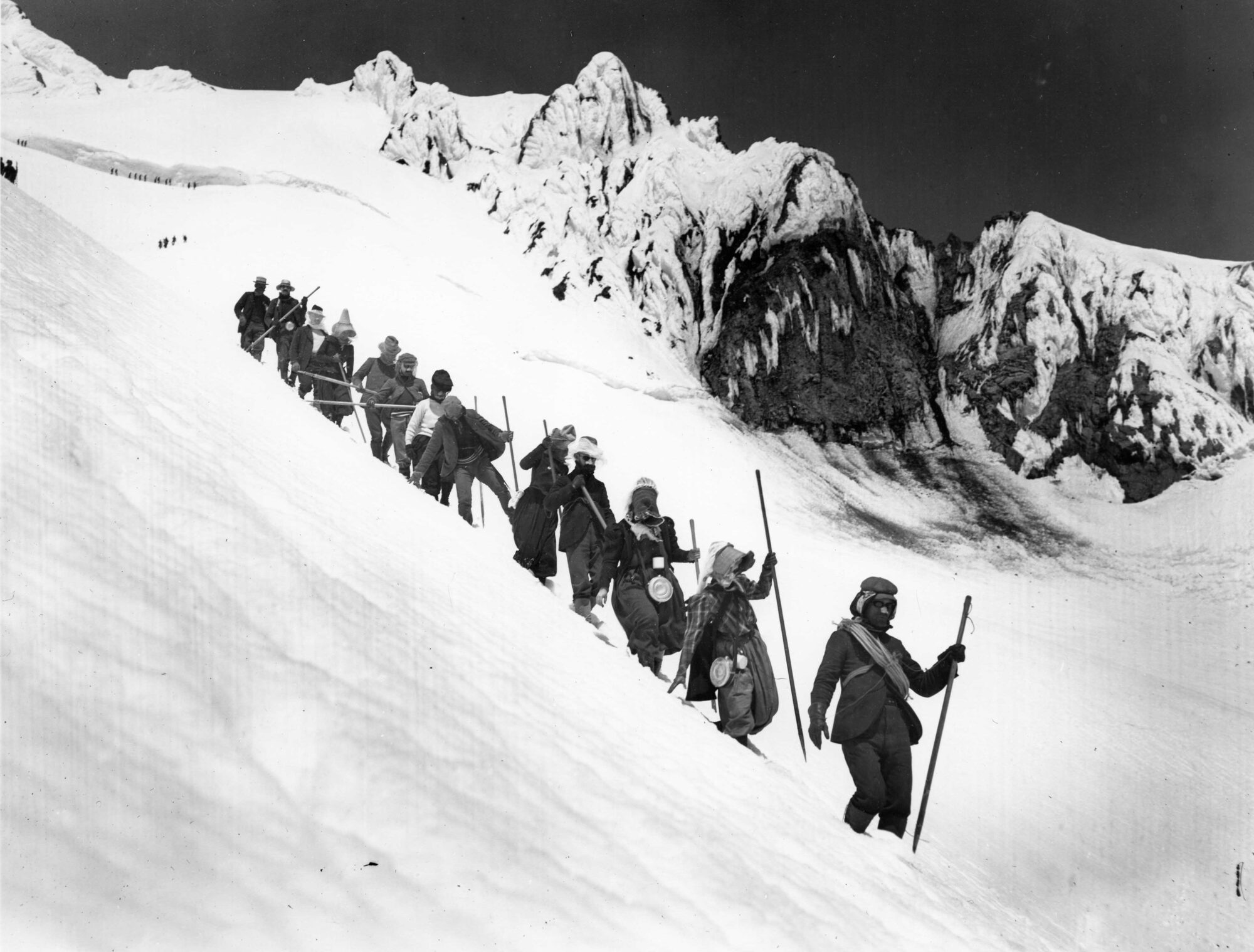 |
The Kinder Path
Photo: Katy Walters |
By Eugene Lewins and Jamie Anderson
Does it really matter if you go for a hike today?
On the 24th of April, 1932, a group of English working men went for a hike and changed the history of public access in Britain. As the Selma Bus Boycott is celebrated in the American civil rights narrative, so the Kinder Scout Mass Trespass is looked back on in Britain. Risking their own safety, they went up against forces barring access to what had for many centuries been public land.
Visualize the scene: Two days earlier, a small group from a local hiking club, the Manchester Ramblers, had been met by a group of gamekeepers who had threatened and abused them until they turned back. This time, four hundred men from the surrounding industrial towns, dressed in old wool jackets and working boots, set off along the legal footpath onto the open moorland–a landscape not that different from our own Columbia Hills–in what I imagine was a silence weighed with excitement. Andy Hemingway picks up the narrative:
At Nab Brow, they caught first sight of the keepers dotted along the slope beneath Sandy Heys. A
 |
| Photo: Eirian Evans |
whistle was sounded for the troupe to stop. On a second whistle they turned right to face Kinder Scout. When the third whistle sounded, they began to scramble up the steep slope towards the keepers. Although a few minor scuffles ensued, and a twisted ankle to one of the landowners’ men, in the majority of cases the protestors just walked through the line of keepers, where they reformed and headed for the plateau.
andyhemingway.wordpress.com/kinder-trespass-80-years-on/
If the day was a success, it came at a price for the organizers. Although there had been no criminal trespass, the leaders were picked out of the returning hikers and charged with unlawful assembly and breach of the peace. They were sent to jail for up to six months.
Had the trespass been a failure?
If authorities anticipated that they could isolate and dissuade these urban hikers, then they underestimated the power of the local recreation clubs.
In 1930s England access to public land was in danger of being lost forever. Successive laws enacted throughout the 18th and 19th centuries had closed off swathes of what had once been common land. At the same time, as populations grew in the industrial cities of the north, working-class clubs sprang up to foster weekend recreation on the neighboring hills. These urban hikers found themselves opposed by estate landowners who wanted to limit access to the moors for their own grouse hunting. With dubious legal precedent, landowners employed game keepers and sympathetic local magistrates to block what had once been public rights of way.
Solutions had been proposed, but to the working men who made up the clubs progress seemed too slow at best. In the 1980’s, when I moved up to the north of England to live closer to climbing areas like the Peak District–by then a national park–these small clubs were still the backbone of outdoor recreation. Without exception their meetings were midweek at a local pub, and the primary topics were where to climb or hike on the weekend and whose car was running well enough to get there. Even then, fifty years later, there were a few spell-binding times when, amidst the beer and smoke and bullshit, a guitar would appear, and an old-timer be pushed into the forefront for an impromptu sing that included these verses, penned by Ewan Macoll, to memorialize the mass trespass. There was always something solemn in the way I heard them sung, with an uncompromising meter which perhaps matched that steady stride of those earlier men walking steadfastly up the slopes of Kinder.
I’m a rambler,
I’m a rambler from Manchester way
I get all my pleasure the hard moorland way
I may be a wage slave on Monday
But I am a free man on Sunday.
The Trespass marked a beginning of change. Faced with the heavy handed response of landowners and local magistrates, a few weeks later 10,000 ramblers assembled at a rally. Clearly they were not to be quieted. Real change came slowly, delayed by the depression, and then World War II. But as I witnessed in those club meetings, the rallying cry of the Trespass was not forgotten. Access issues are very different in Britain and the States, but I believe we share the same passion for the freedom of the hills.












